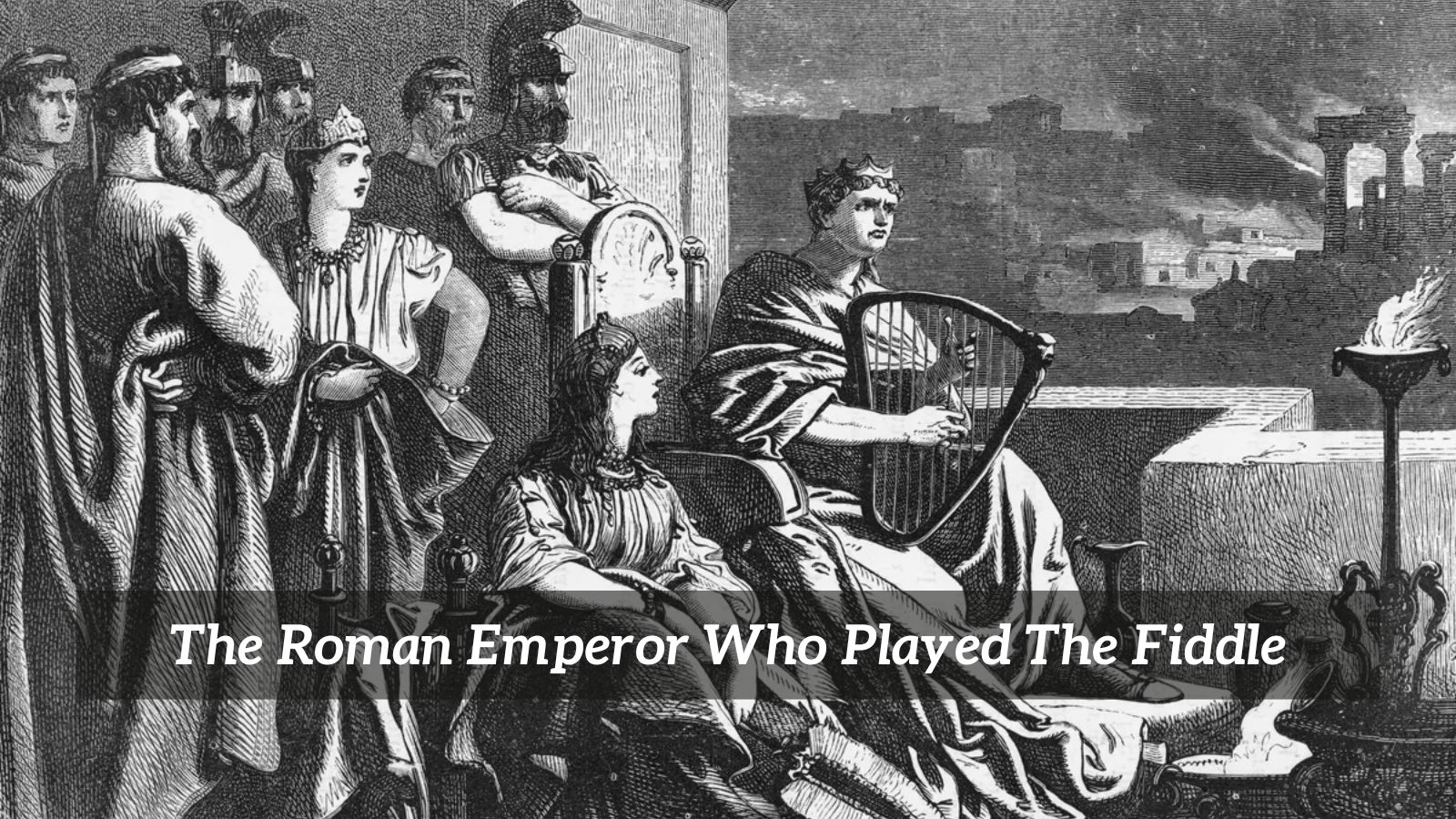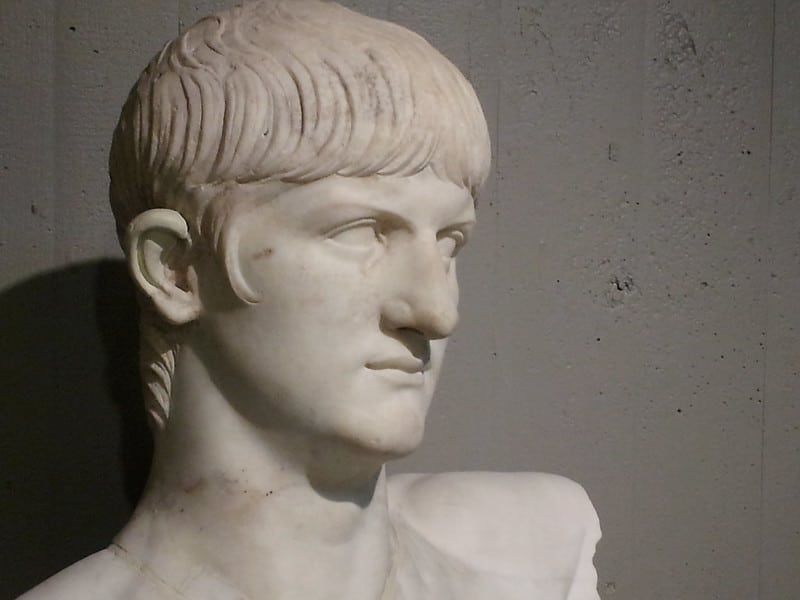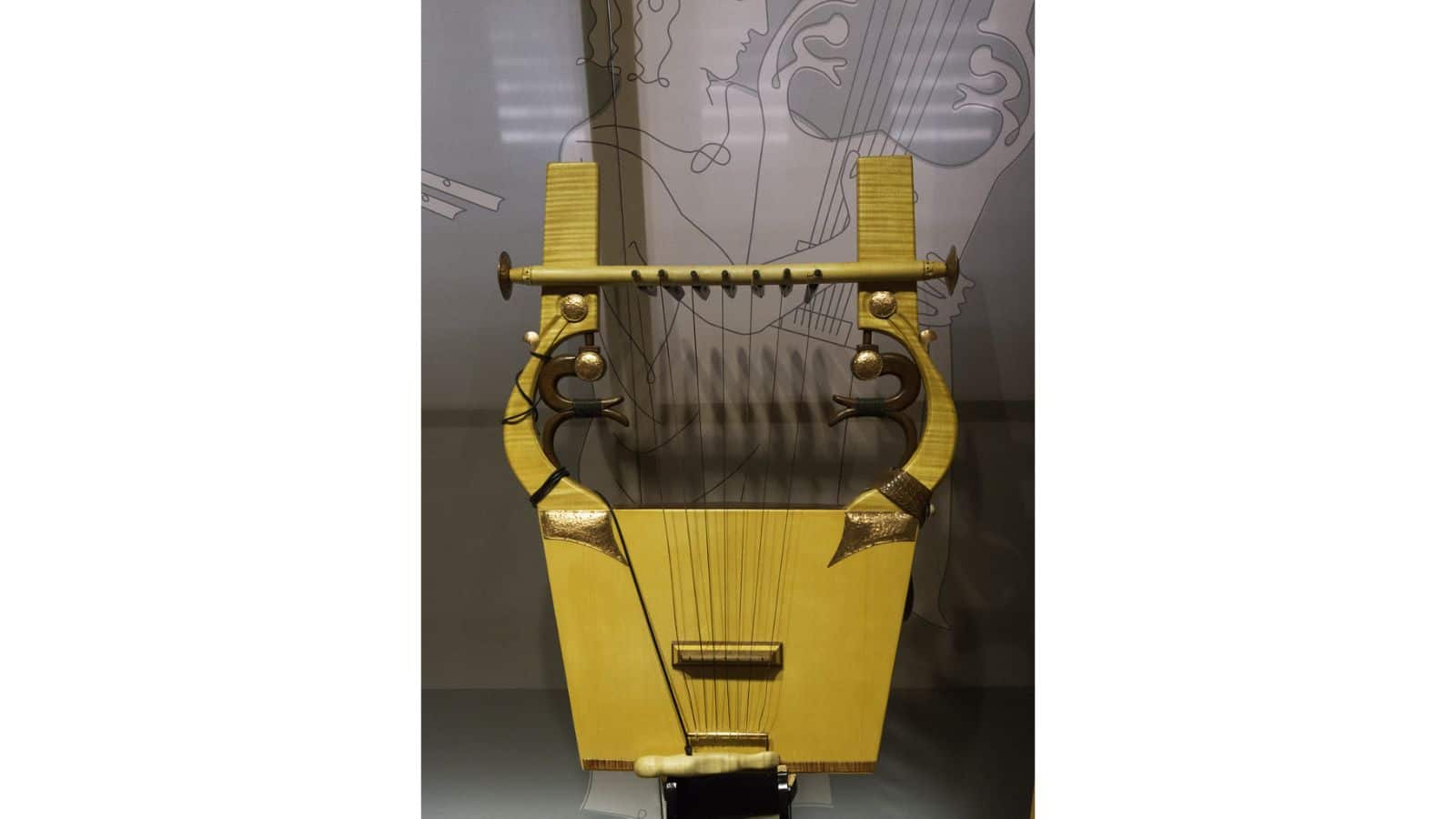
Don’t you just love a legend? A story, a poem, or perhaps a picture that has endured the ravages of time to be with us in the dizziness of 2022. One such legend, rumour or story is that of a certain Roman Emperor who was, amongst other things, a fiddle player.
The Emperor under the spotlight is Nero. Fortunately for the world, this cruel Emperor had a biographer who went by the name of Suetonius. To give him his full name, Gaius Suetonius Tranquillus, was a fellow Roman whose birth date, as far as we can ascertain, was 69CE.
The Roman Emperor Who Played The Fiddle
Suetonius was a prolific writer chronicling the lives of the Ceasars in De vita Caesarum. It is in these works that the ugly truth underneath the Emperor’s life becomes apparent. This also assured Suetonius fame.
There is no doubt that Suetonius was extremely close to several Emperors and I believe his writings are viewed as highly reputable. Once he was dismissed from court life his work centred on Greek pastimes, Roman events and gossip of the day.
From these collected works we can assemble a credible picture of Emperor Nero. He was an Emperor given terrible cruelty. From accounts of his activities, we know Nero tortured animals and indulged in orgies, homicide, and incest.
He held a burning hatred of Christians. Perhaps he was a product of his time, maybe something darker. Certainly, the information we hold points to a bacchanalian individual.
One aspect of this ancient narrative I need to clarify is the use of the word fiddle. Today we would probably understand the noun to refer to a violin. The instrument we speak of is called a fiddle as a colloquial term, usually so-called by folk players of all genres.
The violin and the fiddle are essentially the same instruments however differences in strings, tuning and bows can make a significant difference to the sound of the instrument.
All this brings us to the obvious question, did Nero play a fiddle at all? The simple answer is no. The reason is that the fiddle or the violin did not exist.
Nero was supposed to have played the fiddle in AD64, hundreds of years before the violin emerged from its predecessor, the viol. It wasn’t until the late Renaissance, and with the moral and financial support of Catherine Medici, that the violin came to be. Nero could not have played one.
Another eminent writer of the time, and member of the Roman Senate, Lucius Cassius Dio (150 – 235), provides us with vital detail regarding the fiddle. He describes Nero’s clothing at the time of the alleged fiddle playing as that of a cithara player.
A cithara is one of many types of Greek lyres. Its appearance is quite striking, with a wooden box-shaped body (sound box), with two wooden arms that are joined by a crossbar.
The number of strings grew over the development of the instrument from around three up to twelve. Commonly a plectrum struck the strings from the player’s right hand with the left-hand muting strings that were redundant to the performance.
Playing techniques varied with the plectrum sometimes put aside in favour of finger plucking. As a popular instrument of the Roman times, and from the written observations of Dio and Suetonius, it seems most credible that if Nero played anything at all, he probably played the cithara.
The most likely reason that the word fiddle appears in the stories is that in Medieval times many instruments from the string family came to be collectively referred to as fidicula. From here you can see where the word we now recognise derives.
The story that surrounds the title is based on the premise that Nero played the fiddle while Rome burned. A tragedy befell Rome in AD64. Reportedly, for five days the city burned with devastating consequences.
Countless buildings were destroyed and thousands of Romans lost their lives. As you might expect, the people of Rome wanted to point the finger towards someone, and given that Nero was despised, who better to blame?
This is apparently where the rumours began that Nero simply ignored the terrors of the fire and instead enjoyed playing the fiddle while the catastrophe raged.
Counter to the blame game the Romans were playing, Nero behaved as an Emperor should. Nero was supposed to have opened his gardens to the fleeing, beleaguered residents of the city and done much more besides helping them.
From the records that exist, some 70% of buildings were destroyed in the fire and Nero firmly placed the blame on the Christians.
Following the devastation of Rome, Nero exacted a horrific vengeance on the Christians with executions in great numbers. His persecution of the Christians never abated but Nero did then build the city back on the ruins that remained.
A further fact that is important not to overlook is that Nero wasn’t in Rome when the fire began. Of course, this fuelled the rumour that it was Nero who had organised the whole thing.
Nero’s grand villa was situated in the far reaches of the city at Antium. This ancient town is to the south of Rome, supposedly founded by the son of Odysseus. If Nero was indeed in residence at his villa, would he have even seen the fire?
What emerges from the tangle of accusations, fables, and the more reliable written accounts, is that Nero was a tyrant. His practices towards the Christians and many other people and animals who shared his time on earth were barbaric.
Nero certainly did not play the fiddle as it didn’t exist, but he may well have played the cithara. It is highly doubtful that Nero played this instrument whilst Rome was in flames but the sentiment of one who does nothing while others are in need remains in our culture today.
On discovering that Rome was on fire Nero acted as any leader should, and definitely was not playing the fiddle on the hills of Rome.


